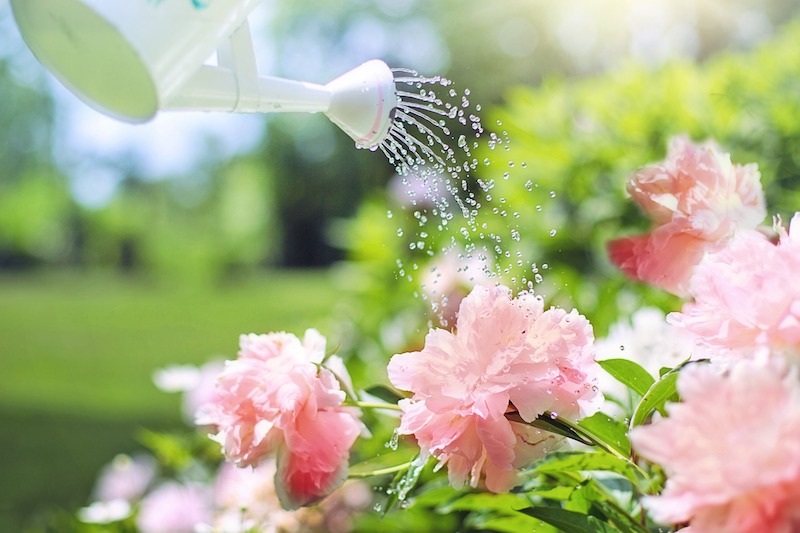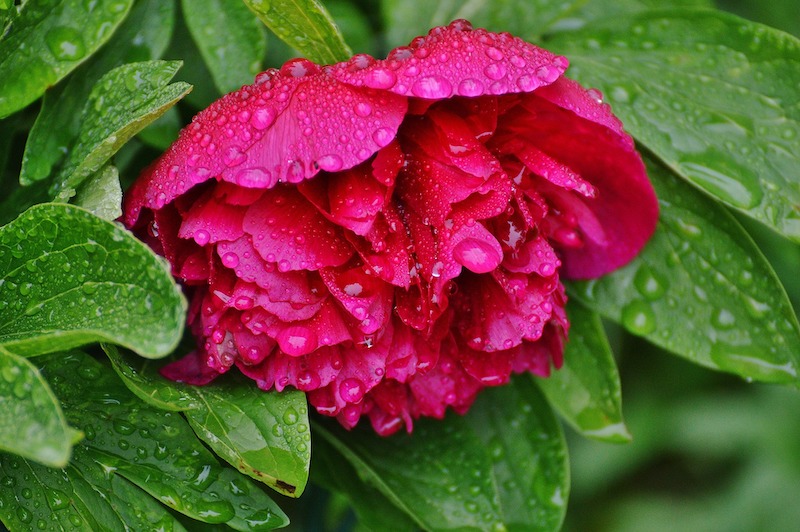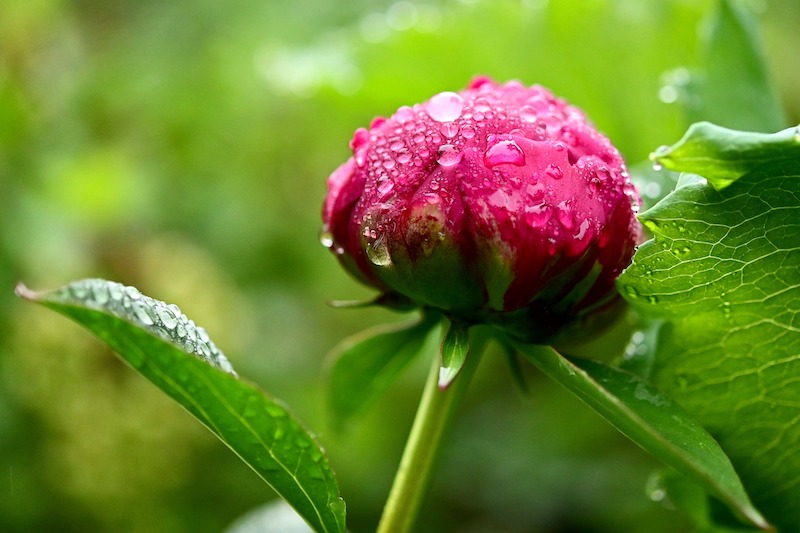Peonies are relatively effortless in their care. These timeless garden beauties will provide elegant flowers and foliage for decades to come when properly cared for. Newly planted Peonies require about an inch of water roughly every 5-7 days. Once mature, water the soil and root areas every 10 days or so, and check more frequently during extended periods of drought. Consider rainfall in your watering schedule, as you may be watering less often during spring due to seasonal rain showers.

How To Tell If Peonies Need to be Watered
Visual clues to tell if your Peony needs water are dried discolored foliage, wilting stems, and bud drop. The best way to see if your Peonies need water is to do the finger test. Insert your index finger a few inches into the soil, if it's dry, it's time to water. Newly planted Peonies require about an inch of water per week. Once Peonies mature, you can water the soil deeply around the roots every 10 days or so. Take note of recent rainfall to guide your watering regime.

How Often To Water Peonies
With newly planted Peonies, provide an inch or so of water per week, including hand watering, drip irrigation, and rainfall. After a few years, Peonies can be watered deeply but less frequently when the soil has partially dried out. Water the drip line near the plant's roots, and avoid overhead watering as this can promote foliar fungal diseases.
Check the soil moisture more frequently if Peonies are planted in a container, as the soil in containers tends to dry out faster. Well-draining soil is essential whether Peonies are planted in the landscape or in a container. Stick your finger into the soil a few inches to feel the moisture level of the soil or use a moisture meter to monitor watering needs.

Best Time To Water Peonies
Water Peonies in the early morning if possible, and avoid watering overhead as this can encourage foliar diseases. Peonies must be planted in well-draining soil to avoid root rot. Focus the water toward the soil and root zone, and avoid splashing water up toward the foliage in case there are fungal spores in the surrounding soil.
Water throughout spring, summer, and fall. It's not necessary to water Peonies during their winter dormancy, as they will naturally receive enough moisture from winter rain and snow. For Peonies planted in containers, you can bring them indoors to a cool location during their dormant winter period. Moisten the soil every few weeks, and do not oversaturate the soil, allowing it to dry out in between waterings.
How to Water Peonies
Step 1 - Make note of recent rainfall.
Newly planted Peonies should receive about an inch of water per week.
Step 2 - Water mature Peonies less frequently.
After Peonies have a few growing seasons under their belt, scale back the frequency of watering to once every 10-14 days. Check the soil moisture, particularly during the hottest days of summer or during extended periods of drought. If the soil feels dry a few inches down, it's time to water.
Step 3 - Drip irrigation as an option.
Drip irrigation is an excellent way to make sure your Peonies have ample water reaching their roots, and not the foliage. This is particularly helpful when planting Peonies en masse as a flowering hedge.
Step 4 - Reduce watering during winter dormancy.
Natural precipitation is enough to sustain Peonies over the winter.
Peonies Watering Tips
- Water early in the morning
- Water the roots, avoid splashing the foliage
- Water thoroughly, and check soil moisture weekly
- Newly planted Peonies need an inch of water per week
- Water mature Peonies every 10-14 days
- Soil must be well-draining; excess water will promote root rot
 |
Author Chris Link - Published 02-13-2023 |
